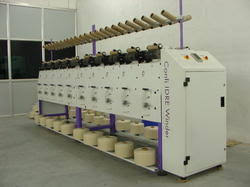Cutting tool (machining)
In the context of machining, a cutting tool or cutter is any tool that is used to remove some material from the work piece by means of shear deformation. Cutting may be accomplished by single-point or multipoint tools. Single-point tools are used in turning, shaping, planing and similar operations, and remove material by means of one cutting edge. Millong and drilling tools are often multipoint tools. It is a body having teeth or cutting edges on it. Grinding tools are also multipoint tools. Each grain of abrasive functions as a microscopic single-point cutting edge (although of high negative rake angle), and shears a tiny chip.
Cutting tool materials must be harder than the material which is to be cut, and the tool must be able to withstand the heat and force generated in the metal-cutting process. Also, the tool must have a specific geometry, with clearance angles designed so that the cutting edge can contact the workpiece without the rest of the tool dragging on the workpiece surface. The angle of the cutting face is also important, as is the flute width, number of flutes or teeth, and margin size. In order to have a long working life, all of the above must be optimized, plus the speeds and feeds at which the tool is run.
Consider the cutting department of Givency Garments Pvt Ltd, received an order from Germany based customer.
Total order quantity = 25,000 garments,
Style description = Basic round neck T-shirt for girls.
Calculate the number of days required to complete the order.
|
Figure-2: Garment style – Basic round neck T-shirt for girls |
Solution:
Step 1: Calculate the available capacity of the cutting room
Assume, the cutting department works with 6 labours, 480 minutes / day with the efficiency of 75%.
Note: These informations can be obtained from the previous data of the particular department by considering the similar work time (SMV) of garment
Hence, the actual capacity is = the available minutes in the cutting department,
= No. of operators × Working hours / day × 60 × Factory efficiency × (100-absenteesm %)
= 6 × 8 × 60 × 0.75
= 2160 minutes / day
Step 2: Calculate the required capacity
To calculate the actual capacity of the cutting room, first we need to identify the SMV of the cutting operation. As discussed earlier, assume average cutting same for the garment is 1.85.
Then, the required capacity of the cutting room is,
= Order quantity × Cutting SMV of a garment
= 25,000 × 1.85 = 46,250 garments
Hence, the number of days required to complete the cutting process is,
46,250
= -------------
2160
= 21.45 days required to complete the order.










0 Comments